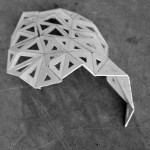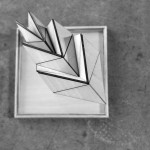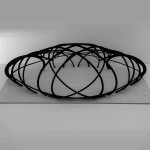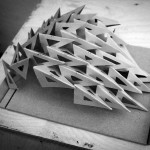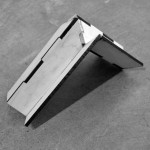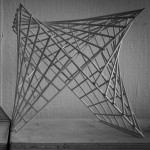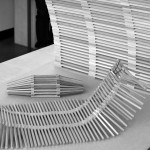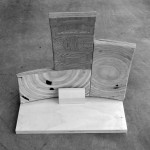Surface structures have fascinated architects since the Renaissance with domes, and vaults providing the first examples and more recently with more complex forms such as Gaudi’s Sagrada Familia, Saarinen’s TWA Terminal, and Toyo Ito’s Funeral Hall. When we consider surface structures in architecture wood has not played a large role in these types of structures to date however current digital manufacturing techniques and highly advanced analysis capabilities may be able to change this. Wood is easy to machine and can be additive or subtractive in its manufacturing and construction processes. Wood is valued in architecture for its colour, texture, smell, tactile and light reflecting properties. It is also highly sustainable and can function as structure, ornament, finish or enclosure.
This studio challenged the conception of wood as it is currently understood by speculating on these large scale surface structures in timber. It’s mandate was to take on conventional notions of wood in order to expand its use and investigate value added processes in timber in order to advance the state of the art and propose new uses and applications of wood in architecture. We asked wood to perform as a surface structure, speculating on how to do this. We researched current state of the art experiments and processes in wood design today and speculated on the manufacturing processes and structural behaviour required to propose new forms and modes of surface structures fabricated from wood.
